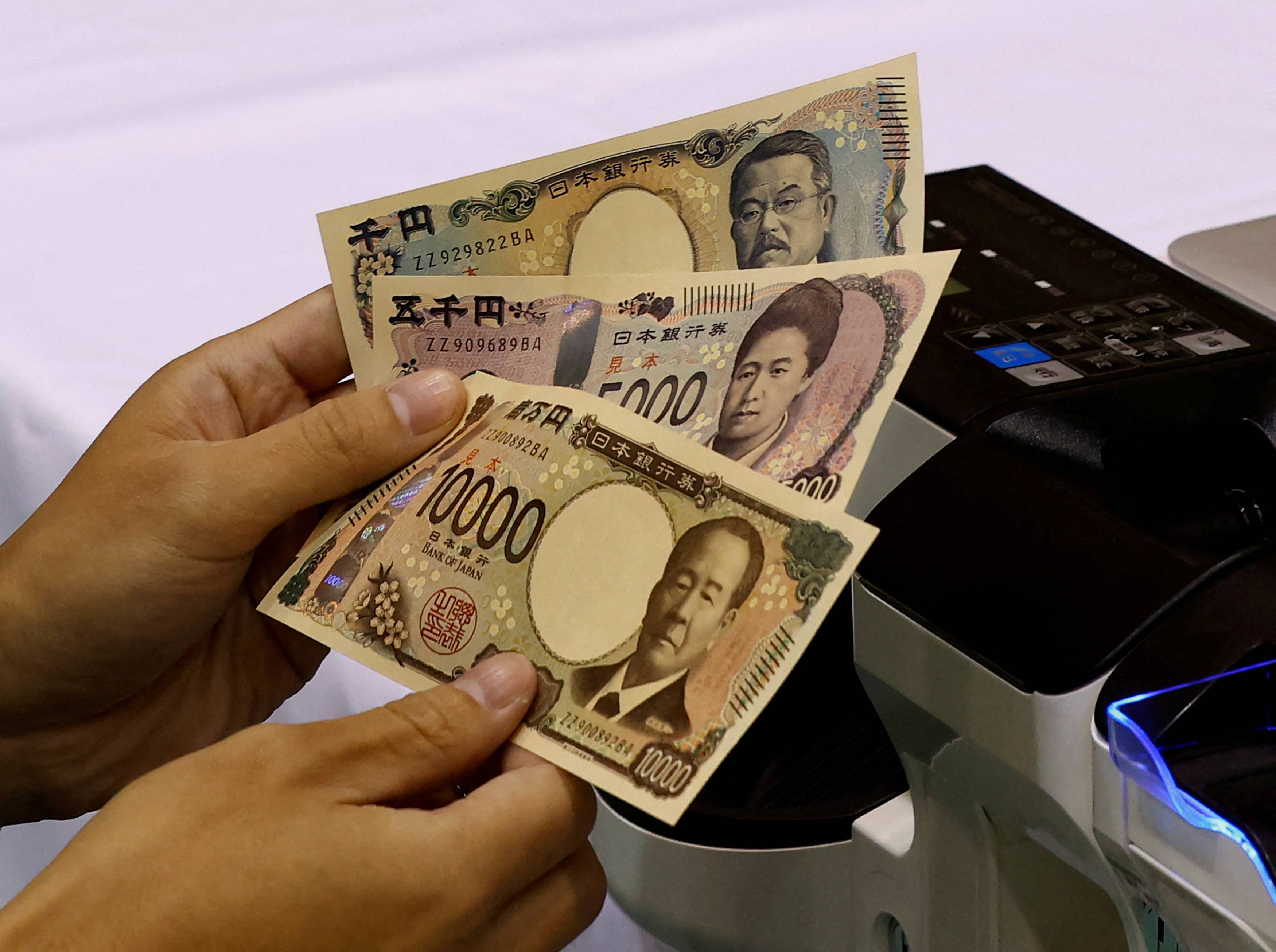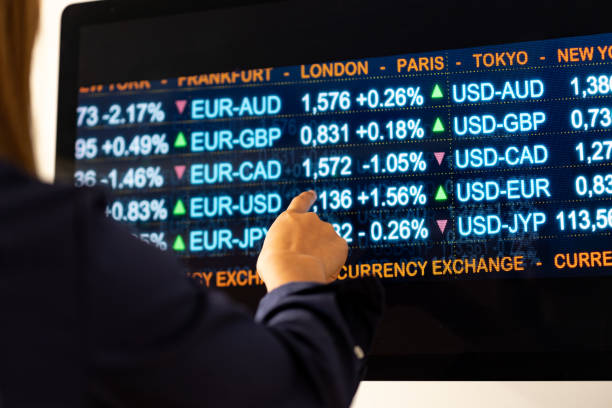Morning Bid: Japan's dramatic FX, bond market divergence

A worker holds samples of new Japanese yen banknotes at a factory of the National Printing Bureau producing Bank of Japan notes at a media event about the new notes scheduled to be introduced in 2024, in Tokyo, Japan, November 21, 2022. REUTERS/Kim Kyung-Hoon/File Photo Acquire Licensing Rights
Nov 1 (Reuters) - A look at the day ahead in Asian markets from Jamie McGeever, financial markets columnist.
It promises to be another dramatic day in Asia on Wednesday, as investors digest the huge moves in Japan's government bond and currency markets and brace for a raft of potentially market-moving economic indicators from across the continent.
The U.S. Federal Reserve policy decision and details from the U.S. Treasury outlining its $776 billion fourth quarter borrowing needs are the two major global events on Wednesday. But Asian markets' first chance to react to that will be Thursday.
Before then, purchasing managers index reports for several countries, including India, South Korea and Indonesia are on tap, as well as Indonesian inflation, South Korean trade, Hong Kong retail sales and Australian housing data.
Particular attention will be paid to China's 'unofficial' Caixin PMI report, a day after 'official' PMI data showed that factory activity unexpectedly contracted in October. Not only that, it shrank faster than the most pessimistic prediction in a Reuters poll had forecast.
This calls into question the strength of China's recovery. Economic surprises had recently risen to the highest since May, and stocks had rallied five days in a row. That run was brought to a halt on Tuesday.
A gloomy 'official' PMI report would likely intensify that downward pressure on stocks, and the currency. The yuan is languishing near September's 16-year low, and selling pressure bearing down on the offshore yuan, in particular, is strong.
But if the yuan is under pressure, it is nothing compared to the onslaught Japan's yen is facing. After the Bank of Japan on Tuesday scrapped the 1% ceiling for the 10-year government bond yield, the yen sank to a new one-year low against the dollar and a fresh 15-year low against the euro.
The currency and bond market reactions to the BOJ's policy tweak could not have been more different - the yen fell the most since April, while Japanese bond yields surged to a fresh decade-high.
This suggests investors are not sure what the longer term implications are, or they are not fully convinced by the BOJ's actions. Or both.
World and U.S. stocks ended the month with a flourish on Tuesday, Wall Street volatility fell back below long-term averages, the Treasuries market was pretty steady, and oil prices fell more than 1%. All this bodes well for the Asian market open on Wednesday.
But it was a bruising start to the fourth quarter. World, U.S. and Asian stocks all fell for a third month in a row, bond yields surged and financial conditions tightened significantly. Investors will be hoping for some respite in November.
Here are key developments that could provide more direction to markets on Wednesday:
- China PMI (Caixin, October)
- Indonesia CPI inflation (October)
- South Korea trade (October)
By Jamie McGeever;
Our Standards: The Thomson Reuters Trust Principles.
How do futures traders review their trading?
Futures trading is a form of financial speculation that involves buying and selling contracts that represent the future delivery of an asset, such as a commodity, a currency, an index, or a stock. Futures traders aim to profit from the price movements of the underlying asset, without actually owning
Futures night trading hours
Futures are contracts that obligate the buyer or seller to exchange an asset or commodity at a specified future date and price. They are used for hedging, speculation, and arbitrage purposes in the global market. Futures can be based on various underlying assets, such as currencies, commodities, ind
How can futures efficiently increase the success rate of intraday trading?
Intraday trading is a form of trading that involves buying and selling securities within the same trading day, without holding any positions overnight. Intraday traders aim to profit from the short-term price fluctuations of the market, using various tools and strategies to analyze and execute trade
What are the factors that can affect how much money can be made in futures?
Futures trading is a form of financial speculation that involves buying and selling contracts that represent the future delivery of an asset, such as a commodity, a currency, an index, or a stock. Futures traders aim to profit from the price movements of the underlying asset, without actually owning








